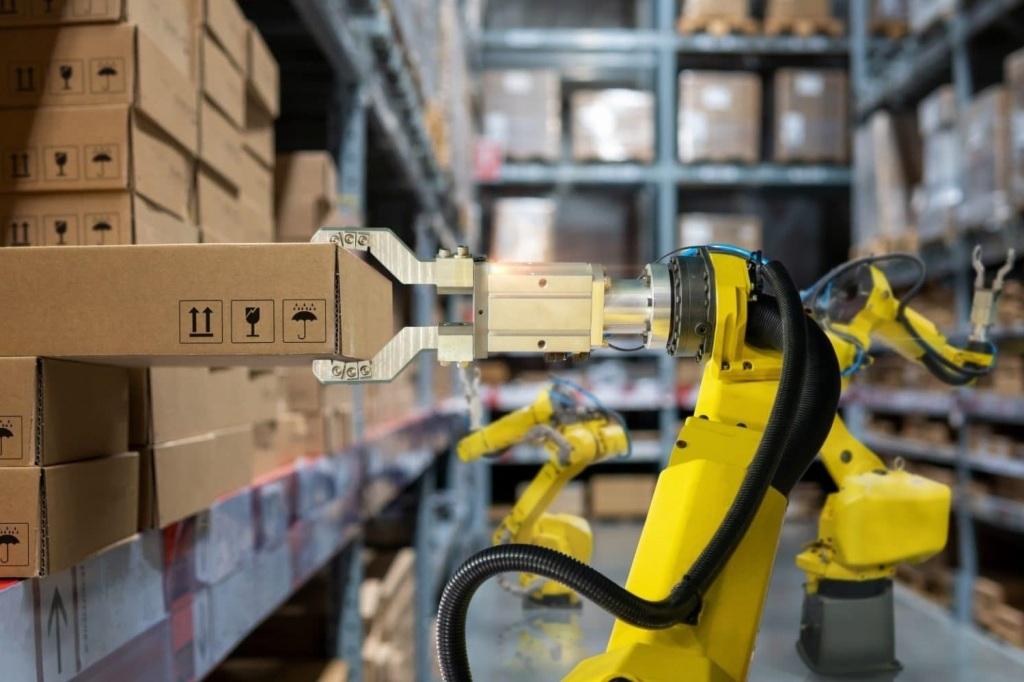 Warehouses play a critical role in global supply chains, but their operations often come at an environmental cost. In his article, "Sustainable Warehouses of Tomorrow: How Robotics is Reshaping the Landscape," Mr. Suumit Joshii, a seasoned professional with 25+ years of experience in driving positive change, explores innovative solutions at the intersection of robotics and warehouse operations.
Warehouses play a critical role in global supply chains, but their operations often come at an environmental cost. In his article, "Sustainable Warehouses of Tomorrow: How Robotics is Reshaping the Landscape," Mr. Suumit Joshii, a seasoned professional with 25+ years of experience in driving positive change, explores innovative solutions at the intersection of robotics and warehouse operations.
As the Chief Learning Officer and Head of Business Excellence at Addverb, a leading global robotics and automation company, Mr. Joshii draws from his rich background, having worked with renowned companies such as Tata Motors, RPG Group, Jubilant, Endurance Technologies, and HCC. In his article, he explores specific solutions offered by robotics, spanning from reducing energy consumption and waste to enhancing worker safety and optimizing space utilization. He not only highlights the transformative impact of integrating robots into warehouse operations but also emphasizes the role of data-driven decision-making, creating a continuous cycle of improvement for sustainable practices.
This insightful article offers a glimpse into the future of warehouses, where robots, guided by Mr. Joshii's extensive expertise, play a crucial role in building a more responsible and sustainable supply chain.
Scroll down to delve deeper into the transformative perspectives shaping tomorrow's warehouses.
Warehouses have long played a crucial role in the global supply chain, serving as the backbone of efficient logistics. However, as the demand for faster deliveries and more efficient supply chains continues to rise, so does the environmental impact. Traditional warehouses often contribute significantly to carbon emissions through energy-intensive operations, excessive packaging, and inefficient material handling systems. Sustainable warehouses aim to mitigate these negative effects by reducing waste, conserving resources, and operating with minimal environmental impact.
As the world grapples with the challenges of climate change and the need for more efficient supply chain management, the integration of robotics into warehouse operations is playing a pivotal role in reshaping the landscape, leading to the emergence of sustainable warehouses of tomorrow.
The urgency of sustainability in warehousing is adamant from the rise in global greenhouse gas emissions and the need to reduce our carbon footprint. The integration of robotics and automation solutions contribute towards greener practices in the following ways:
1. Energy Efficiency: Robots can be programmed to perform tasks efficiently with minimal energy consumption, leading to reduced operational costs and a smaller carbon footprint.
Likewise, Automated Storage and Retrieval Systems (ASRS) have energy-recycling capabilities. Specifically, during their descending operations, these systems capture and repurpose energy, further promoting energy conservation.
2. Resilient Supply Chain: Circular economy can help make Supply Chains more resilient and sustainable with automation. Instead of following the traditional "take, make, dispose" model, the circular economy emphasises reducing materials, repurposing, and recycling, ensuring products and solutions last longer to reduce environmental damage.
3. Space Optimisation: Robotic systems can store and retrieve products with precision, allowing warehouses to make the most of available space and reduce the need for expansion or new construction, which can consume additional resources.
4. Inventory Management: Automated systems, including robots and IoT sensors, help monitor inventory levels and reduce overstocking or understocking, which can lead to waste and obsolescence.
5. Enhanced Worker Safety: Robots and automation can handle physically demanding and repetitive tasks, allowing human workers to focus on more complex and value-added activities. This can reduce the risk of workplace injuries and improve job satisfaction.
6. Reduced Product Damage: Robots with precise movements can handle delicate or fragile products, decreasing damage and minimising waste.
7. Extended Product Lifespan: Robots play a role in enhancing manufacturing quality, ensuring products have longevity. This cuts down on replacements and repairs, ultimately saving resources and conserving energy.
8. Flexible Manufacturing: Modern robots are highly adaptable, and can be quickly reconfigured to produce different products, allowing for more responsive and demand-driven production, reducing overproduction and excess inventory, saving resources to a great extent.
9. Data-Driven Optimisation: Robots generate substantial data, enabling the analysis and enhancement of manufacturing processes in various industries. Leveraging data analytics and machine learning from these robots, warehouse and factory managers can pinpoint areas for improvement and implement sustainable changes.
The sustainable warehouses of tomorrow are rapidly taking shape, thanks to the integration of robotics and automation. These technological advancements are not only enhancing operational efficiency but also addressing the pressing need for sustainability and environmental responsibility. As we move forward, it is clear that robotics will continue to reshape the warehouse landscape, driving improvements in energy efficiency, accuracy, reduced emissions and environmental footprint.




 Warehouses play a critical role in global supply chains, but their operations often come at an environmental cost. In his article, "Sustainable Warehouses of Tomorrow: How Robotics is Reshaping the Landscape," Mr. Suumit Joshii, a seasoned professional with 25+ years of experience in driving positive change, explores innovative solutions at the intersection of robotics and warehouse operations.
Warehouses play a critical role in global supply chains, but their operations often come at an environmental cost. In his article, "Sustainable Warehouses of Tomorrow: How Robotics is Reshaping the Landscape," Mr. Suumit Joshii, a seasoned professional with 25+ years of experience in driving positive change, explores innovative solutions at the intersection of robotics and warehouse operations.












.jpg)




